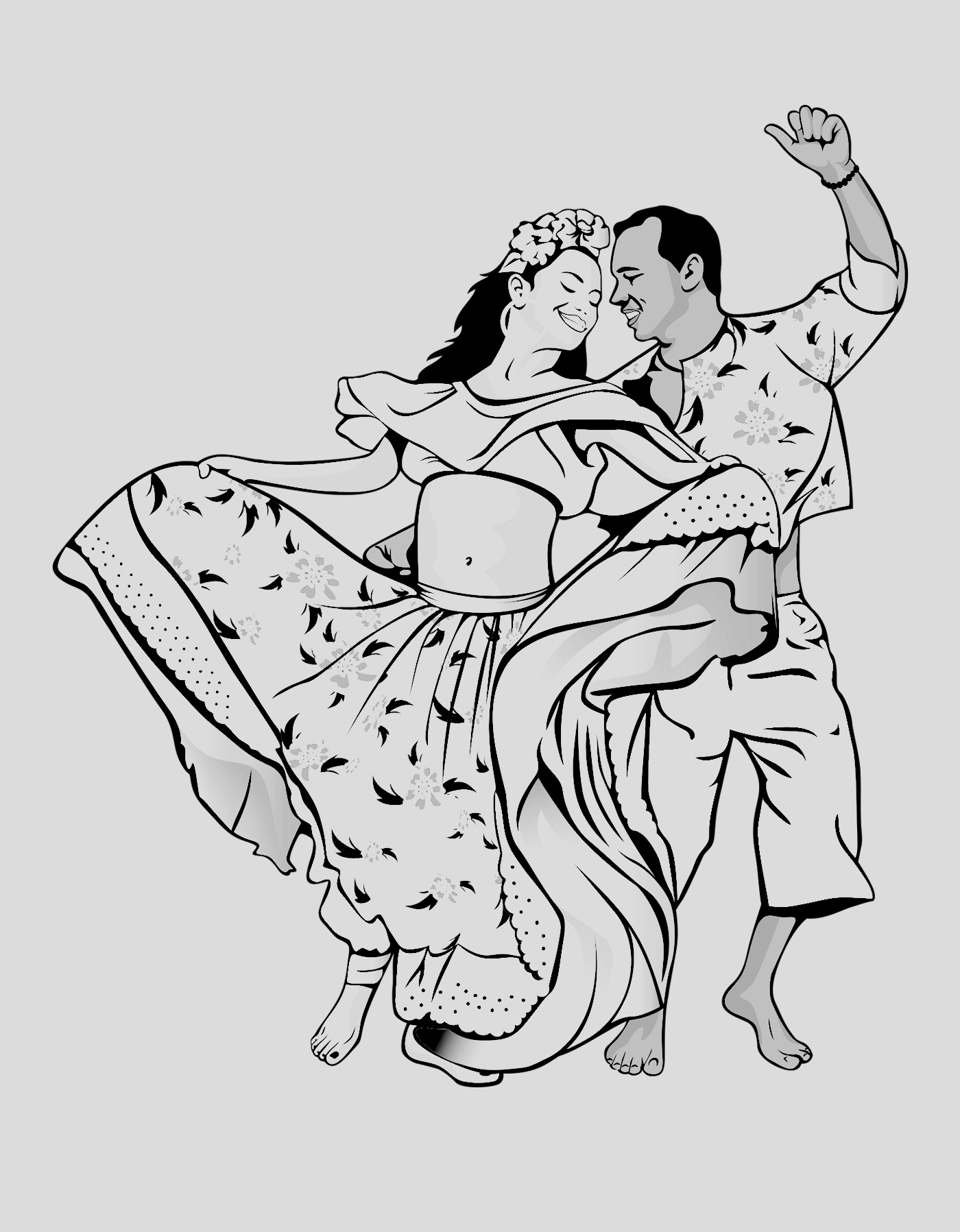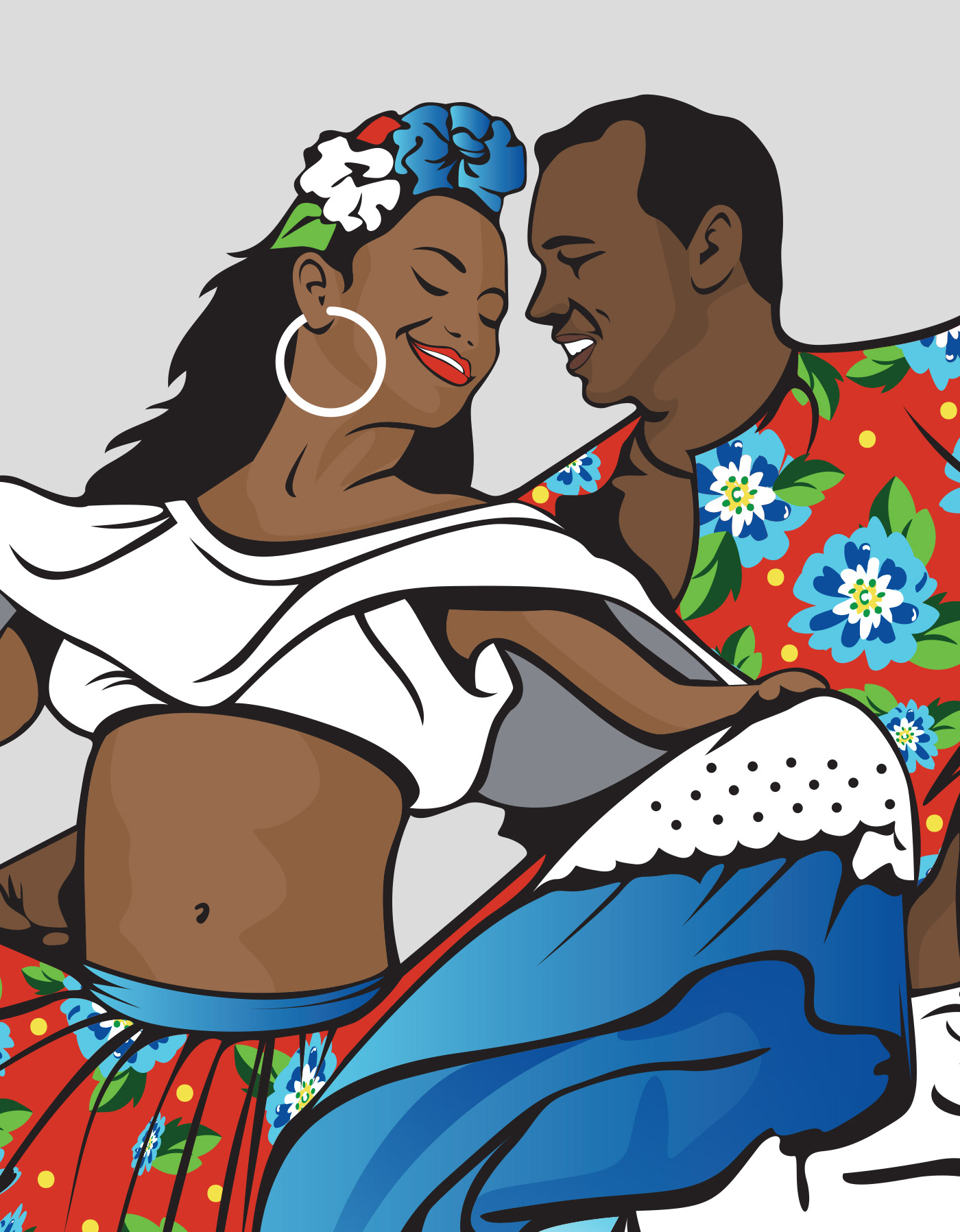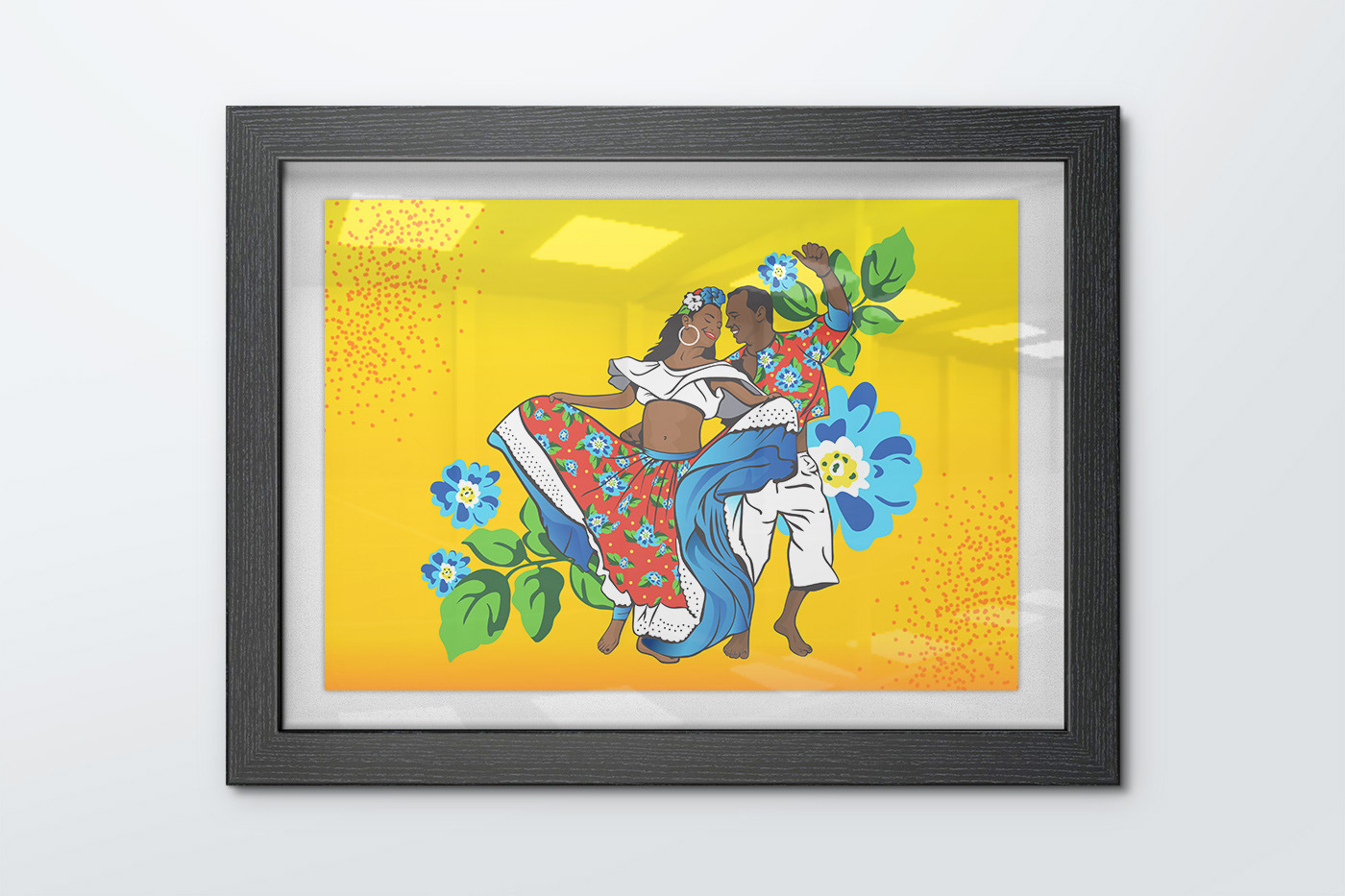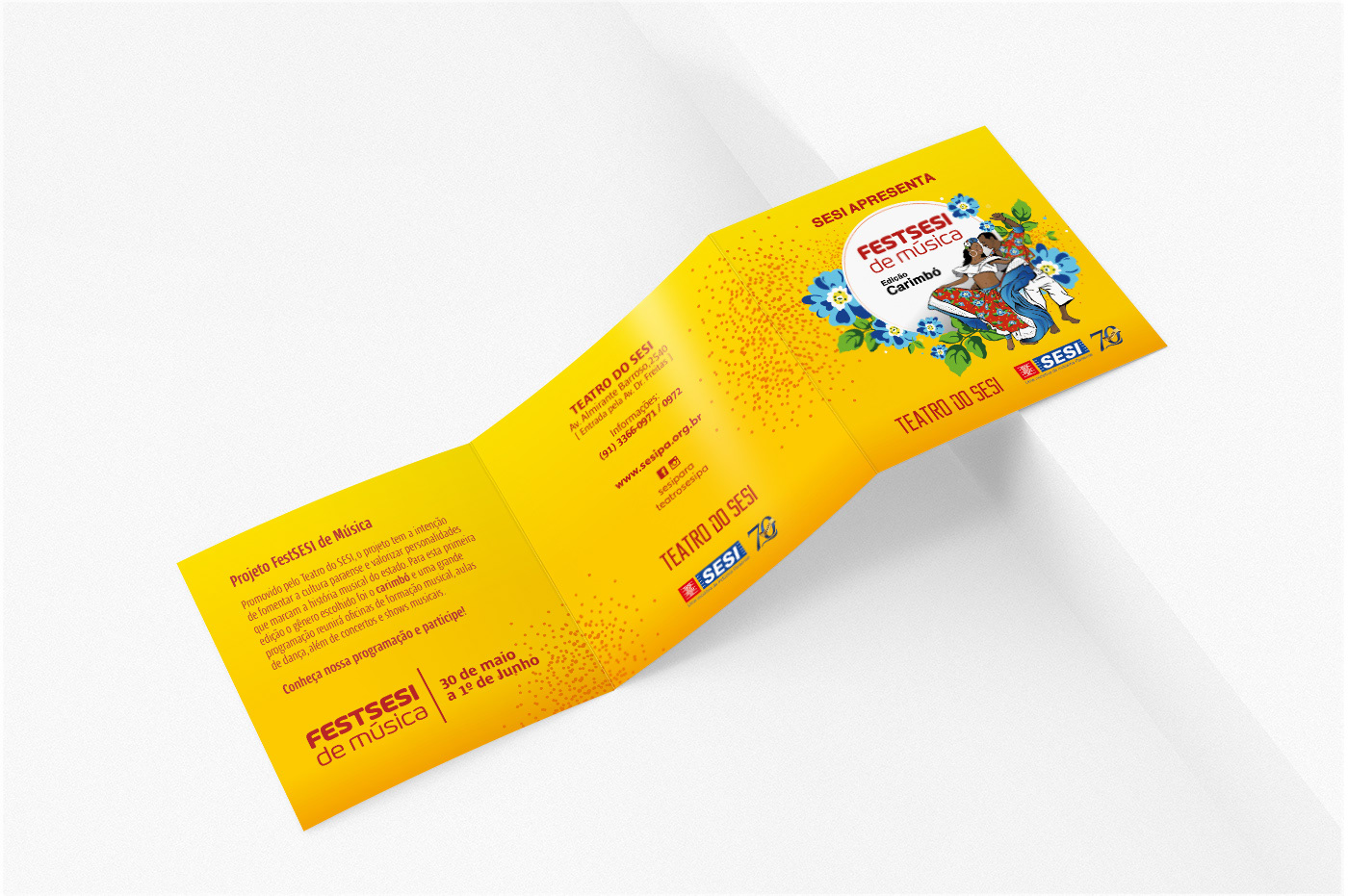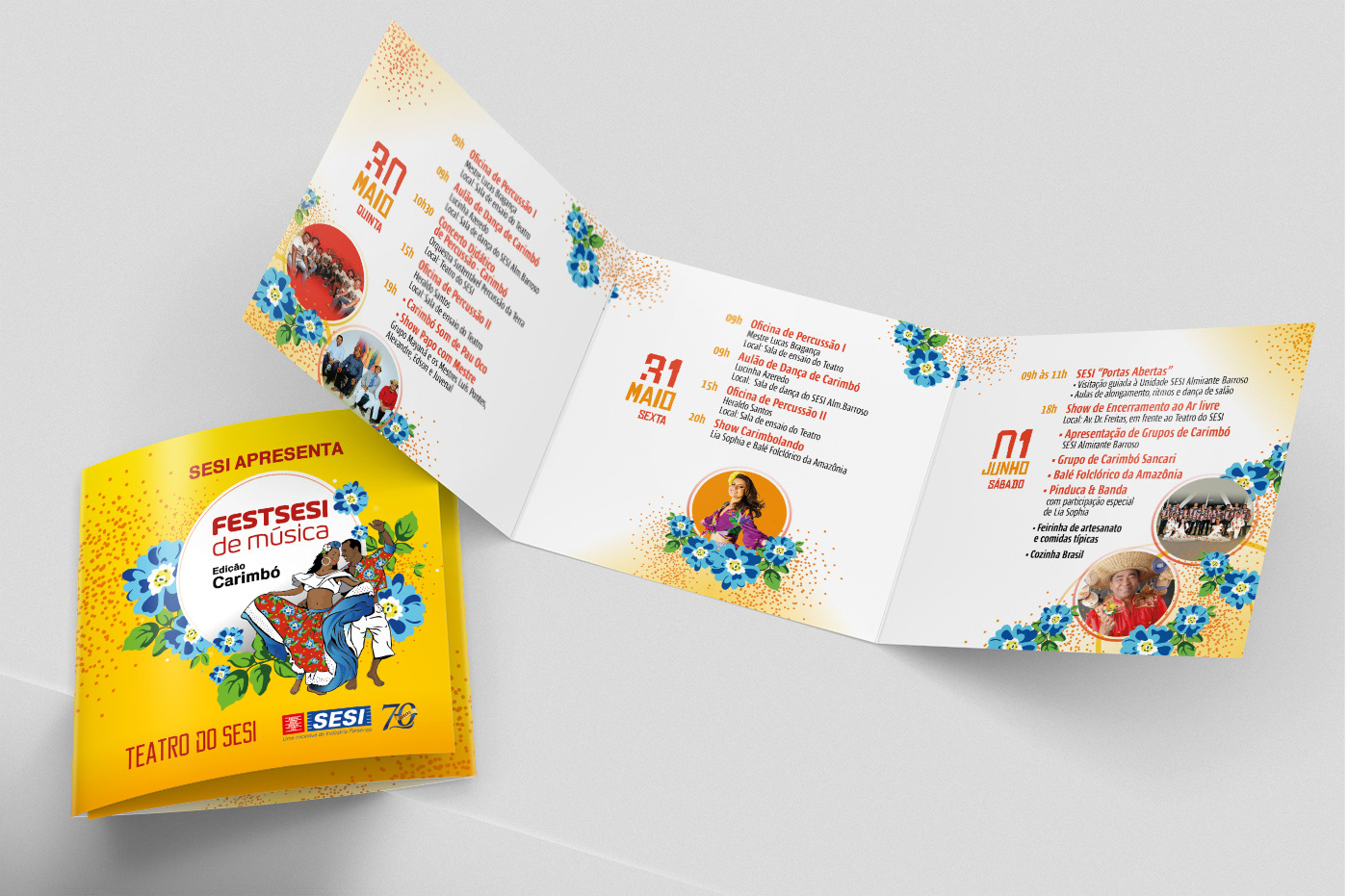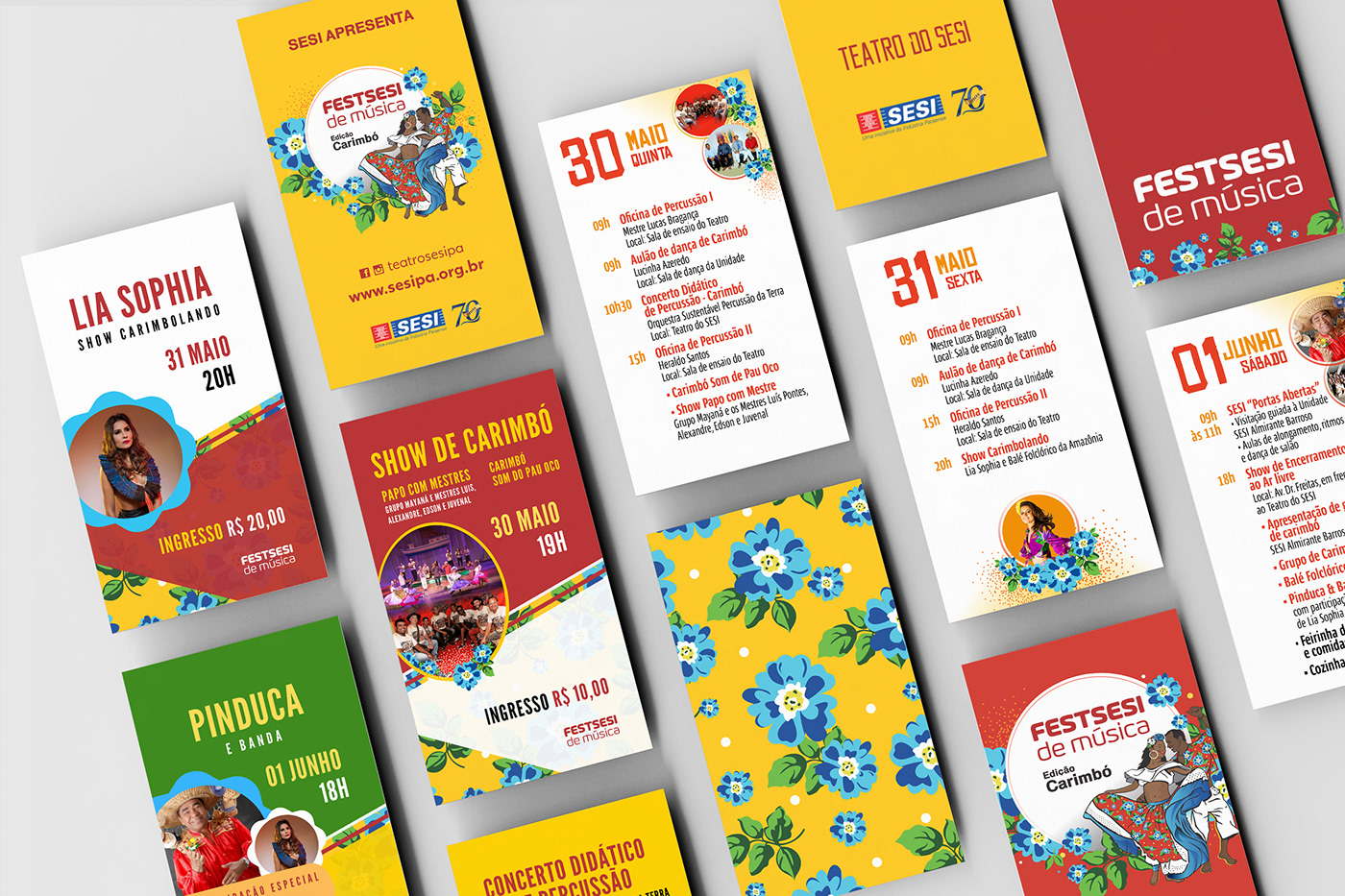Projeto FestSESI de Música
FestSESI Music Project
Location
BELÉM - PARÁ
BELÉM - PARÁ
Service
Illustration, brand and Visual Identity
Date
May / 2019
. . .
Promovido pelo Teatro do SESI, o projeto tem a intenção de fomentar a cultura paraense e valorizar personalidades que marcam a história musical do estado.
Para esta primeira edição o gênero escolhido foi o carimbó e uma grande
programação reuniu oficinas de formação musical, aulas de dança, além
programação reuniu oficinas de formação musical, aulas de dança, além
de concertos e shows musicais.
Promoted by SESI Theater, the project intends to of fomenting the culture of Pará and valuing personalities that mark the musical history of the state. For this first edition the chosen genus was the carimbó and a great program will brought together music training workshops, dance, as well as concerts and musical shows.
Minha missão: Projetar uma identidade que represente o Carimbó em todos os seus aspectos,
por meio de cores e elementos que direcionem ao entendimento, por meio de uma identidade figurativa, vibrante e harmônica.
My mission: To project an identity that represents the Carimbó in all its aspects,
by means of colors and elements that lead to the understanding, through a figurative, vibrant and harmonious identity.
by means of colors and elements that lead to the understanding, through a figurative, vibrant and harmonious identity.
Um pouco da história do Carimbó
A dança do carimbó é uma manifestação típica do Estado do Pará. O Carimbó é considerado um gênero musical de origem indígena com influências da cultura negra e portuguesa. Sua palavra em tupi refere-se ao tambor feito de tronco de árvore, chamado Curimbó, no qual “Curi” significa pau e “mbó” refere-se a oco ou furado, em todo traduz pau oco que produz som.
A dança, segundo historiadores surgiu por meio de tribos indígenas que tocavam o curimbó e dançavam para realizar rituais. No momento em que os escravos entraram em contato com essa dança, impuseram os seus movimentos característicos africanos, desta forma a dança passou a caracterizar-se em uma espécie de batuque. Colonizadores portugueses também se sentiram atraídos pelo ritmo. Estes, estimulavam essas manifestações e faziam questão de participar assim, acrescentaram também seus traços da expressão corporal característica das danças portuguesas. Deste modo, o ritmo do carimbó foi evoluindo, disseminando e tornou-se popular na região Norte, ou seja, a partir da fusão de culturas, surgiu a manifestação de criatividade artística tornando-se atualmente tradição da identidade do povo paraense.
A little history about Carimbó
The Carimbó dance is a typical manifestation of the State of Pará. The Carimbó is considered a musical genre of indigenous origin with influences of the black and Portuguese culture. Its word in tupi refers to the drum made of tree trunk, called Curimbó, in which "Curi" means wood trunk and "mbó" refers to empty or hollow, in a literal translation, hollow trunk that produces sound.
The dance, according to historians appeared through indigenous tribes that touched the curimbó and danced to perform rituals. At the moment when the slaves came into contact with this dance, they imposed their characteristic African movements, in this way the dance began to be characterized in a kind of batuque. Portuguese colonizers were also attracted by the rhythm. These, stimulated these manifestations and made a point of participating in this way, also added their traces of the corporal expression characteristic of the Portuguese dances. In this way, the rhythm of the carimbó evolved, disseminated and became popular in the North region, that is to say, from the fusion of cultures, emerged the manifestation of artistic creativity becoming at the moment a tradition of the identity of the paraense people.
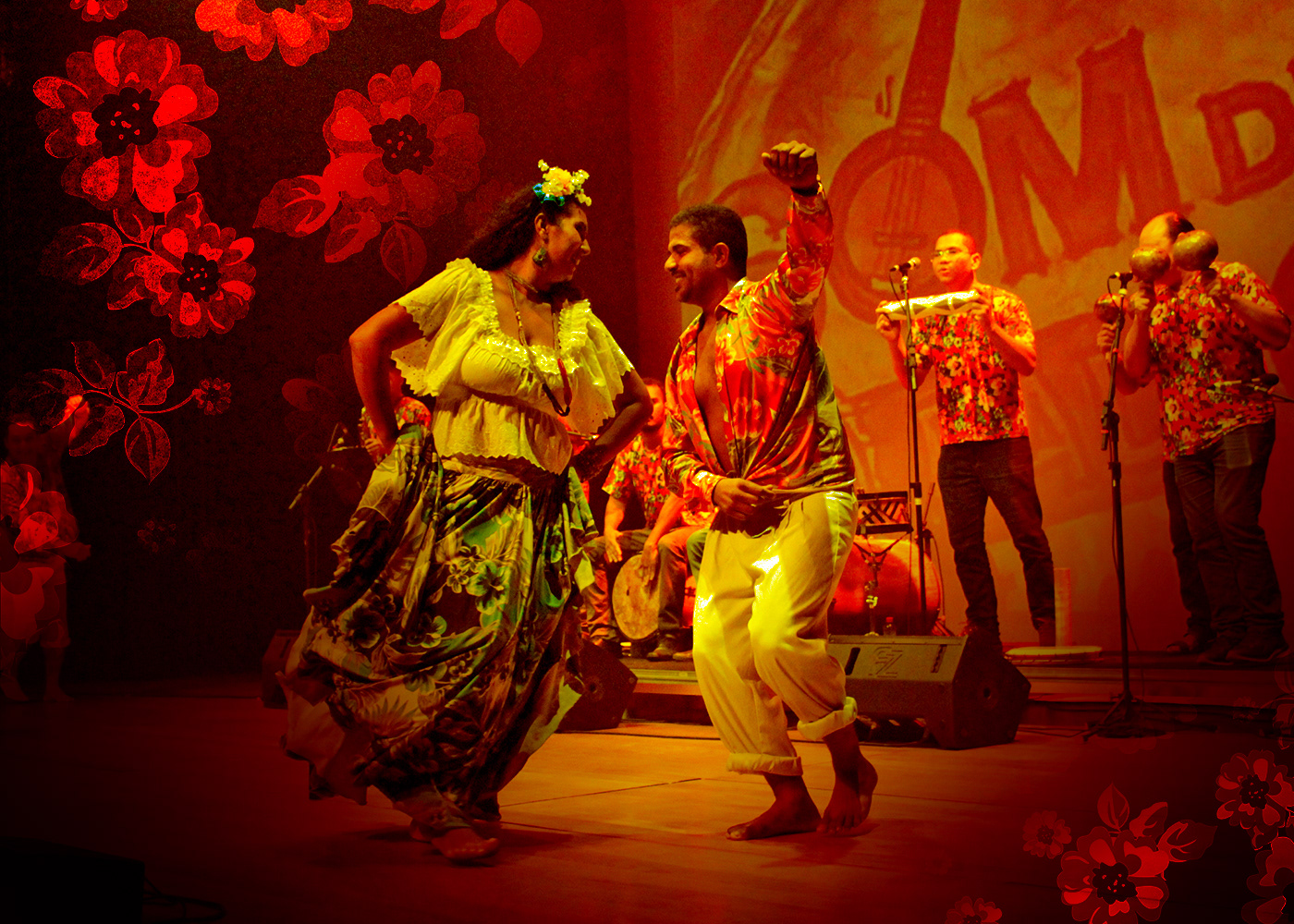
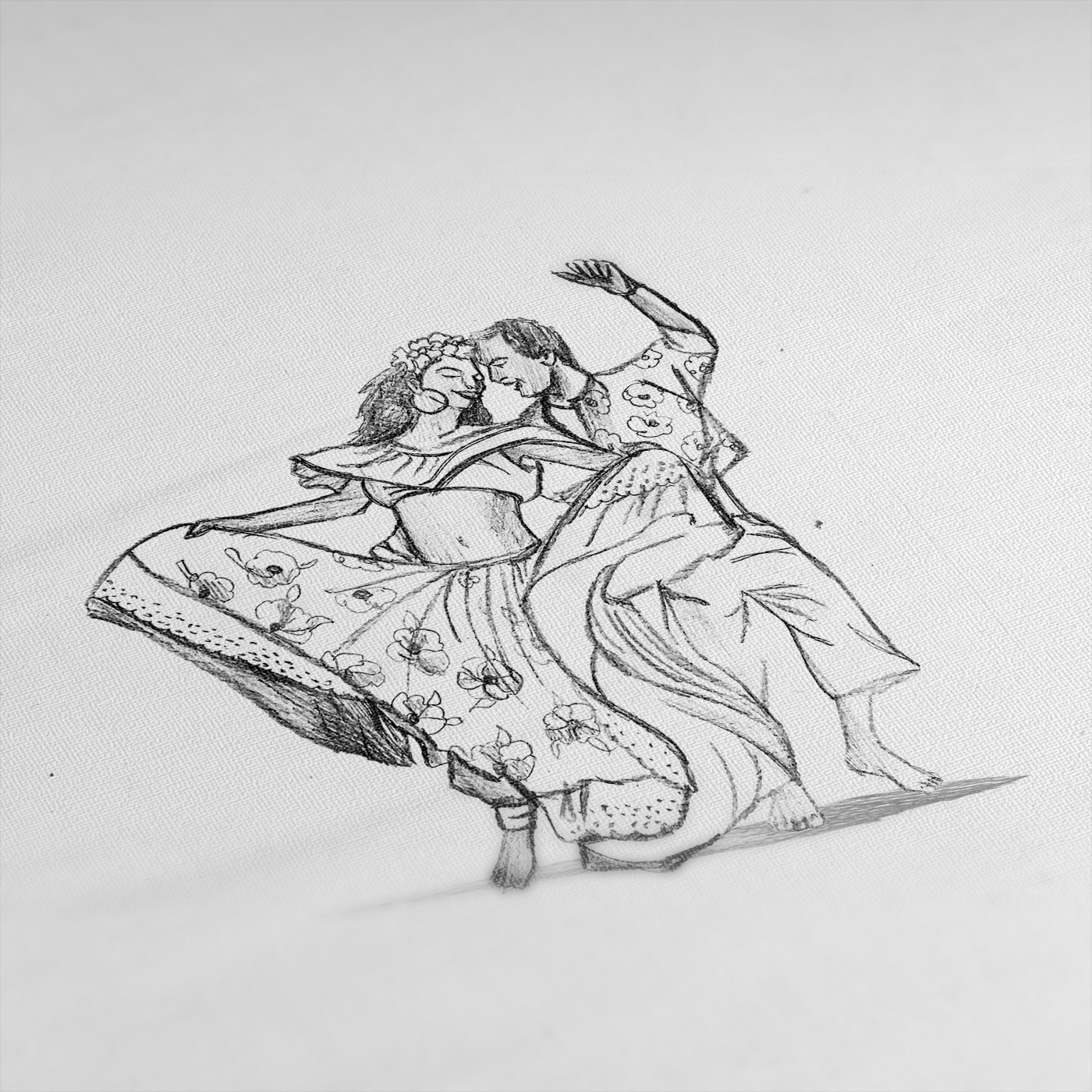
Sketch
